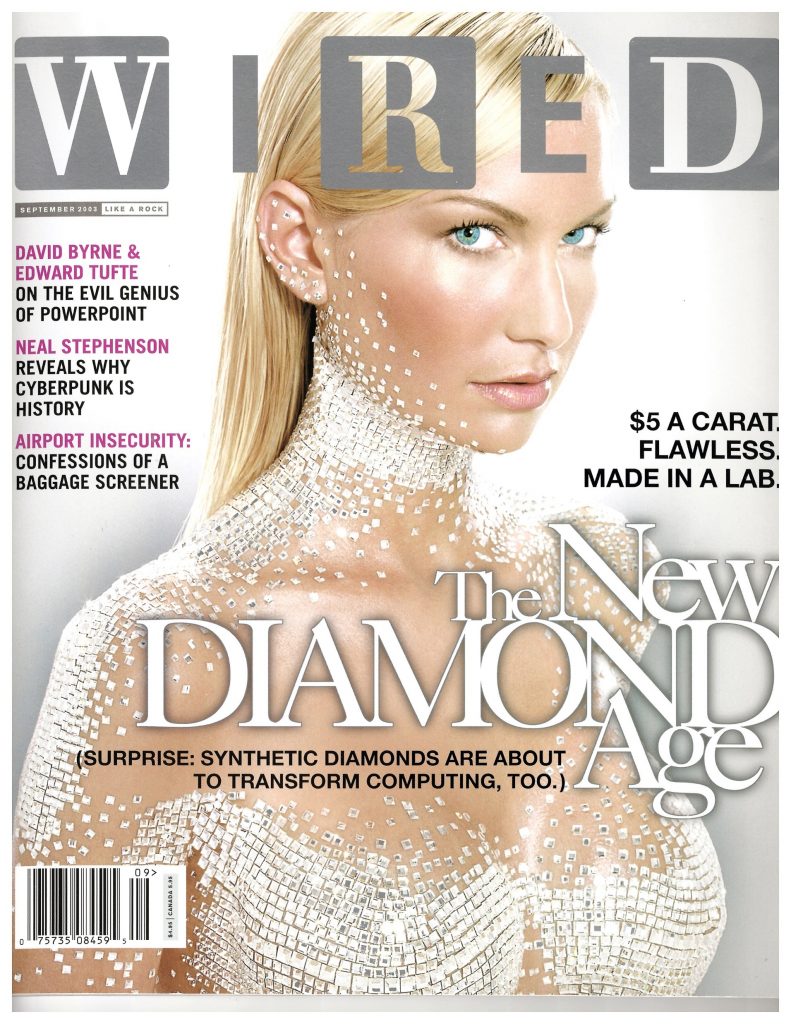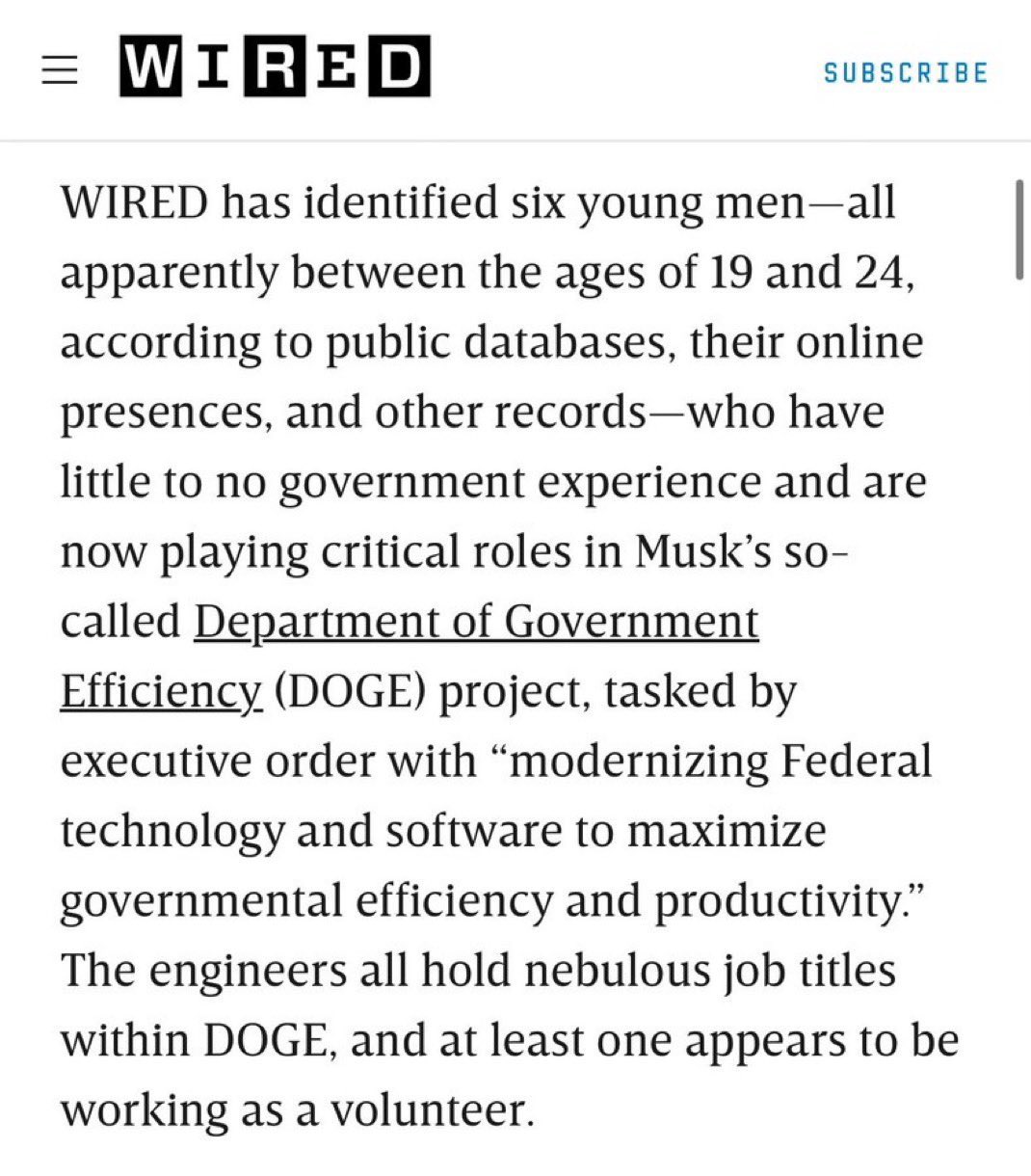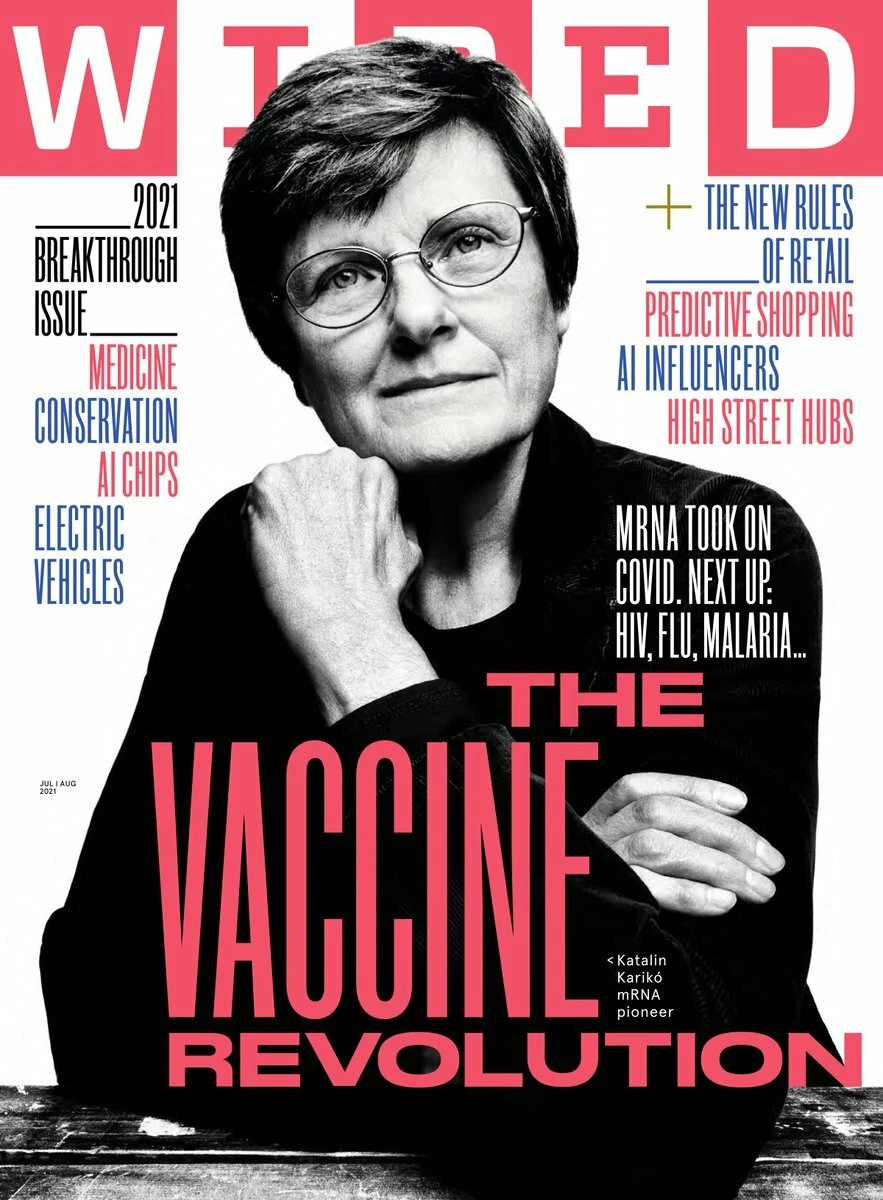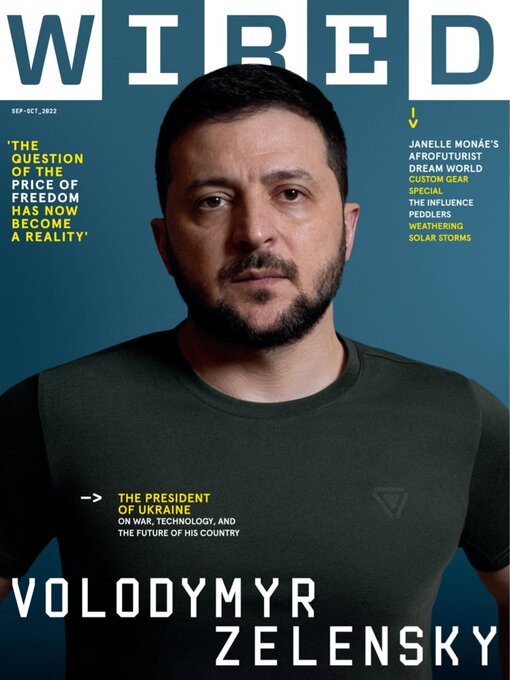- My Forums
- Tiger Rant
- LSU Recruiting
- SEC Rant
- Saints Talk
- Pelicans Talk
- More Sports Board
- Coaching Changes
- Fantasy Sports
- Golf Board
- Soccer Board
- O-T Lounge
- Tech Board
- Home/Garden Board
- Outdoor Board
- Health/Fitness Board
- Movie/TV Board
- Book Board
- Music Board
- Political Talk
- Money Talk
- Fark Board
- Gaming Board
- Travel Board
- Food/Drink Board
- Ticket Exchange
- TD Help Board
Customize My Forums- View All Forums
- Show Left Links
- Topic Sort Options
- Trending Topics
- Recent Topics
- Active Topics
Started By
Message

WIRED MAGAZINE THEN AND NOW
Posted on 2/3/25 at 10:01 am
Posted on 2/3/25 at 10:01 am
THEN


NOW





NOW



This post was edited on 2/3/25 at 10:14 am
Posted on 2/3/25 at 10:08 am to CAD703X
LOL.
How much USAID money is being funneled to Wired magazine? Mockingbird is alive and well.
It seems USAID is the funding mechanism for everything shitty. Them and DoD. When is DOGE "occupying" the Pentagon?
How much USAID money is being funneled to Wired magazine? Mockingbird is alive and well.
It seems USAID is the funding mechanism for everything shitty. Them and DoD. When is DOGE "occupying" the Pentagon?
Posted on 2/3/25 at 10:12 am to CAD703X
“One appears to be working as a volunteer”
Well, this cannot stand!!!
Well, this cannot stand!!!
Posted on 2/3/25 at 10:24 am to Robin Masters
quote:
“One appears to be working as a volunteer”
Well, this cannot stand!!!
How could they possibly get a kickback on a grossly oversized government contract if someone does it for free? The foundation of our current government is at stake.
Posted on 2/3/25 at 10:26 am to CAD703X
"little to no government experience"
I'd imagine that's why they are there...
I'd imagine that's why they are there...
Posted on 2/3/25 at 10:33 am to CAD703X
Ummm lab diamonds were NEVER $5 per carat.
Posted on 2/3/25 at 10:41 am to Sweep Da Leg
quote:
Ummm lab diamonds were NEVER $5 per carat.
not after production/processes/tools were taken over by the diamond cartels (DeBeers) and destroyed or modified for their purposes.
i think if you'd read that article in 2003 you'd have a different opinion on this.
LINK
quote:
Abbaschian's efforts had produced some very high-quality stones. So Clarke flew to London to show off a batch to potential investors. Rather than simply present them as a pile of loose diamonds, he went to a jeweler in Hatton Garden, the city's diamond district, and asked if a few of his stones could be set in rings. The jeweler agreed, and Clarke returned to his hotel room at Claridge's. The phone rang. It was De Beers.
According to Clarke, a De Beers executive, James Evans Lombe, was tipped off about the synthetic diamonds within two hours of their arrival at the jeweler's. Lombe asked for a meeting with the General. The De Beers executive drove directly to Claridge's, and the two men sat down in the tearoom to the strains of a piano and violin duet.
De Beers refuses to comment on the meeting – or about anything for this story – but Clarke says he simply placed his diamonds on the table. "When I told him that we planned to set up a factory to mass-produce these, he turned white," the General recalls. "They knew about the technology, but they thought it would stay in Russia and that nobody would get it working right. By the end of the conversation, his hands were shaking."
But De Beers wasn't backing down. Throughout 2000, the cartel accelerated its Gem Defensive Programme, sending out its testing machines – dubbed DiamondSure and DiamondView – to the largest international gem labs. Traditionally, these labs analyzed and certified color, clarity, and size. Now they were being asked to distinguish between man-made and mined. The DiamondSure shines light through a stone and analyzes its refractory characteristics. If the gem comes up suspicious, it must be tested with the DiamondView, which uses ultraviolet light to reveal the crystal's internal structure. "Ideally the trade would like to have a simple instrument that could positively identify a diamond as natural or synthetic," De Beers scientists wrote in 1996, when the company unveiled plans to develop authentication devices. "Unfortunately, our research has led us to conclude that it is not feasible at this time to produce such an ideal instrument, inasmuch as synthetic diamonds are still diamonds physically and chemically."
In the summer of 2001, Abbaschian told the General that they were finally ready to mass-produce diamonds. There was one last decision to make. Each machine was capable of generating a 3-carat yellow stone every three days (colorless takes longer). Given their scarcity, the price per carat was much higher for yellow diamonds – so much higher, in fact, that only the very wealthy could afford them. Plus, colored diamonds have gotten hot in recent years. (J. Lo's engagement ring? Pink diamond.) Clarke decided that he'd make the biggest splash by bringing yellows to Middle America. He'd compete on both price – charging 10 to 50 percent less than naturals – and style. And, if he succeeded with the yellow stones, he could transition into colorless.
The diamond industry fought back. Early last year, De Beers began shipping improved, even more sensitive DiamondSure machines to labs around the world. Meanwhile, industry groups led by the Jewelers Vigilance Committee have pressured the Federal Trade Commission to force Gemesis to label its stones as synthetic.
you'll find the whole article enlightening.
This post was edited on 2/3/25 at 10:49 am
Posted on 2/3/25 at 12:07 pm to CAD703X
"MRNA Took on COVID.."
What a headline.
Yeah... Croatia "took on" the USA men's basketball Dream Team in the '92 Olympics.
same/same.
What a headline.
Yeah... Croatia "took on" the USA men's basketball Dream Team in the '92 Olympics.
same/same.
Popular
Back to top

 5
5






